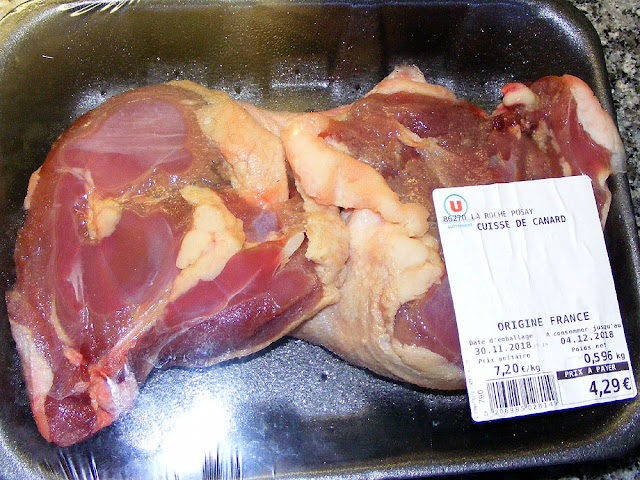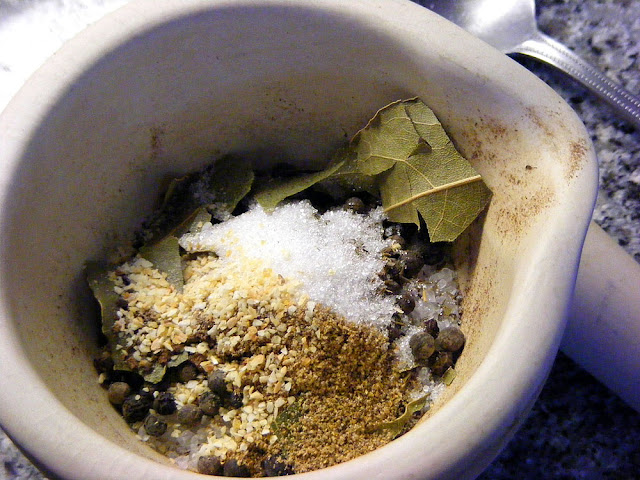Traditional confit de canard (slow cooked duck) requires large quantities of duck fat. Although you can reuse the fat because it hasn't been heated up very much, I find it is far more than I would normally use and it tends to just go off in the fridge before I get to it. I've also on one occasion had a disaster where the liquid fat overflowed on our wood stove, ruining a rug and causing a fire hazard. So for many years I have used Sally Schneider's 'revisionist' technique, where the duck is cured overnight in the traditional way to reduce moisture and impart flavour, but is then cooked in its own juices, sealed in a foil parcel in a low oven for two hours. The flavour and texture is very similar and I don't have all that fat to deal with.
Curing Ingredients
2 tbsp coarse salt
10 juniper berries
1 1/2 tsp black peppercorns
3/4 tsp dried thyme
A bay leaf
6 allspice berries
1/2 tsp coriander seeds
1/2 tsp sugar
1/2 tsp dried garlic flakes
1 tsp eau de vie
Method
- Grind all the dry ingredients of the curing mix in a mortar and pestle.
- Rub the duck legs with eau de vie, then with the curing mix. You will need a tablespoon of curing mix for every 500 g of duck legs. The eau de vie will help dry the skin out, and it is a technique you can use for enhancing the flavour of any poultry (very useful for turning industrially farmed chicken into something more savoury and farmhouse).
- Leave to cure overnight in the fridge (can be left for longer).
- Heat the oven to 150C.
- Pat the duck legs dry with kitchen paper towel and prick the skin in a number of places.
- Arrange the duck legs on one half of a long piece of foil, fold over the other half and fold the edges to seal.
- Put the parcel on a baking tray and cook in the oven for 2 hours.
- Take the duck out of the foil. You can use the duck immediately or store in the fridge or freezer for later.
I tend to make in batches so some is eaten immediately and some frozen. One batch of curing mix will do 4 - 6 duck legs.
Duck legs are one of the by-products of foie gras production and are often very reasonably priced.
I harvested the juniper berries for the curing mix from wild juniper growing locally on the hillsides here.
For details of our private guided tours of chateaux, gardens, wineries, markets and more please visit the Loire Valley Time Travel website. We would be delighted to design a tour for you.







2 comments:
Great idea. Have a good week Diane
It really works well, and I'm a big fan of Sally Schneider. She is a sadly under rated and unknown culinary writer and cook.
Post a Comment